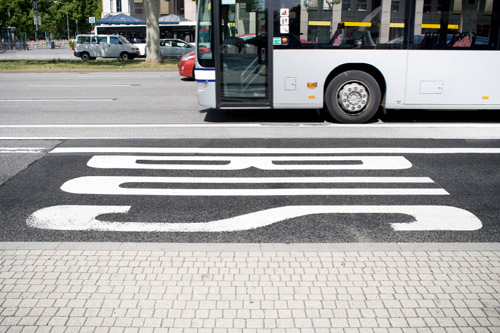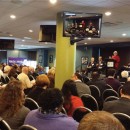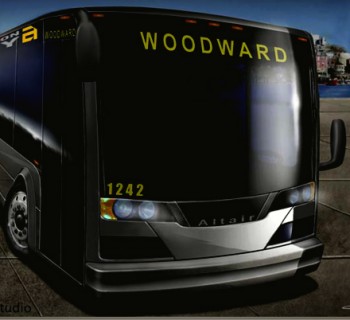It may be no surprise that Metro Detroit spends one-third of what other US regions spend on transit. Yet did you know SMART serves a population greater than Lansing, Saginaw, Flint, Ann Arbor, Grand Rapids, Kalamazoo, Ludington, Bay City, and Port Huron combined? Or that SMART's 1,200 square mile coverage area is greater than any other Michigan transit system?
On Aug. 5, Wayne, Oakland, and Macomb County voters will decide whether to increase the suburban bus system millage from 0.59 to 1 mill — the first increase since 2002. The table below compares the proposed southeast Michigan rate to the existing millage rates of other major Michigan metro areas, including some with notable economic growth:
Get SMART:
SMART is the Suburban Mobility Authority for Regional Transportation.
Area covered: Macomb and parts of Wayne and Oakland counties
Annual trips: 11 million
Fixed Routes: 43
Buses*: 234
*Excluding Dial-a-Ride buses
| Metro Area | System | Millage |
| Detroit | SMART | 0.59 (existing) |
| Detroit | SMART | 1.00 (proposed) |
| Kalamazoo | KMetro | 1.47 |
| Grand Rapids | RAPID | 1.47 |
| Ann Arbor | AAATA | 2.00 |
| Flint | MTA | 2.20 |
| Saginaw | STARS | 3.00 |
| Lansing | CATA | 3.07 |
In the Great Recession's wake, property values in many metro communities have not re-bounded, and the millage increase aims to fill this gap. For homeowners, the proposed SMART millage increase would cost approximately $41 more a year (for a house worth $100,000) — roughly equivalent to one tank of gas. Even if the proposed millage is adopted, the SMART millage will be less than public transit millages in Michigan’s other major metro areas.
If the millage passes, SMART will invest $21 million of the new funds to eliminate its operating deficit, and $72 million will be invested to replace 144 aging, fixed-route buses at $500,000 each. According to SMART CEO John Hertel, without millage passage, SMART would accrue $5 million in debt each year, and could cease operations in 2015. SMART Marketing and Communications Manager Beth Gibbons was blunt, "If the millage doesn’t pass, SMART will go out of business."
In fact, public transit is good business. Every dollar spent on a bus system returns two dollars to local economies by supporting jobs and community development.1 Even those who don’t ride SMART reap economic benefits from SMART's contribution to a more prosperous southeast Michigan.
"People use transit for two main purposes: to make money or to spend money," said Megan Owens, Director of Transportation Riders United (TRU). "Our local economy could sure use more of both!"
Can public transit pay for itself?
Nationally, passenger revenues in the major transit systems average about one-third of operating expenses. Additional revenues come from licensing, federal and state sources, local municipal support, and public/private investments in places that recognize the regional economic benefit of effective transit strategies.
As for millage opposition, a March 2014 public opinion poll by University of Detroit Mercy2 states, "negative perceptions regarding transit are related to the lack of trust in the capability of the systems to meet demand and generate new demand, the inefficiency and unreliability of service, as well as the inadequacy of routes." These concerns are valid. Ironically, most are caused by chronic under-funding of transit.
SMART and its supporters have only two weeks left before the vote. Although Transportation Riders United, the Sierra Club, and MOSES are using methods such as e-blasts and festival booths to garner support, SMART is limited to public awareness messages, and those only began running on cable TV a few weeks ago.
Be informed, visit: SMART (smartbus.org)
Will you vote SMART on August 5th? Take our reader poll!
1 American Public Transportation Association (APTA)
2 http://transweb.sjsu.edu/PDFs/research/1136-6-transit-media-public-opinion.pdf
By: ajordan










